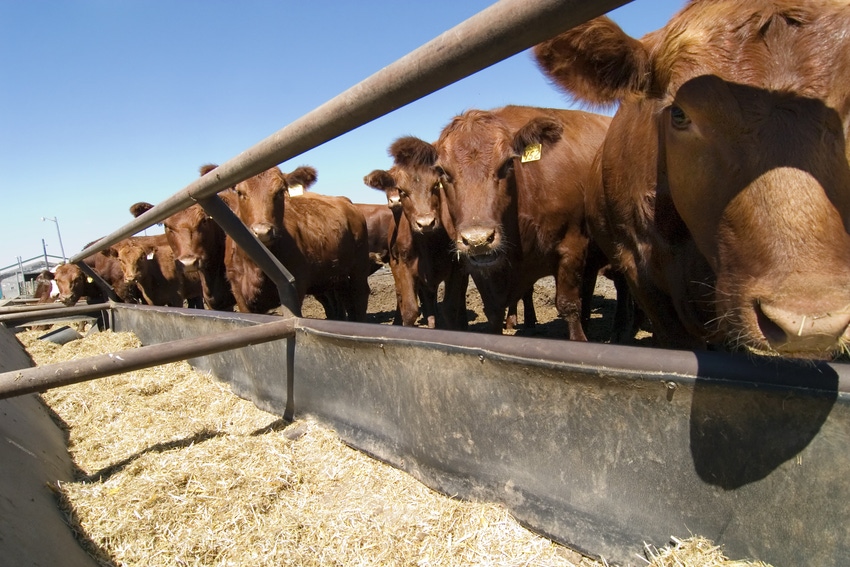Despite collapsed feeder and fed cattle prices, declining feedstuff costs lower cost of gain.
May 13, 2020

While both feeder and fed cattle prices have collapsed year over year, so have feedstuff costs, especially for corn and hay, according to the Livestock Marketing Information Center (LMIC).
In the short term, LMIC said this has significant consequences for the cost of gain in feedlots. The Kansas State University monthly "Focus on Feedlots" survey showed that the average steer cost of gain for March was $83.41/cwt. Kansas feedlot projections for mid-April averaged $74.00, the lowest since August 2018. If grain and hay costs continue to slip, as expected, that number is headed even lower, LMIC said.
Corn prices have been dropping counter-seasonally since February. For the week ending May 8, the U.S. Department of Agriculture’s Agricultural Marketing Service reported that the Texas Triangle corn price was $3.33/bu. ($5.95/cwt.), while the Omaha, Neb., average was $2.97/bu. LMIC said those prices were the lowest since the last two weeks of November 2016. Compared to a year ago, the corn price was down 48 cents/bu. (12%) in the Texas Triangle and down 53 cents/bu. (15%) in Omaha.
LMIC calculates a monthly cattle feeding projected breakeven sale price using feedstuff costs when a 750 lb. steer is put on feed, assuming typical feeding conditions (including weather) in a commercial southern Plains feedlot. Also, LMIC calculates adjusted monthly breakevens based on changes in feedstuff costs. This year, lower-trending feedstuff costs have consistently pulled down the adjusted breakevens compared to the calculation when placed.
Using feedstuff costs fixed at the time of placement, LMIC calculated that a 750 lb. steer sold in April had a breakeven sale price of $115-117/cwt. The estimate for a steer to be sold in September and placed on feed in April was $97-98/cwt. Of course, in addition to lower feedstuff costs, feeder cattle prices also have been declining, LMIC noted.
“Those looking at weak cattle prices need to recognize that cost of feedlot gain also has been dropping. As this summer unfolds, producers running summer stockers and even cow/calf operations may want to carefully evaluate retained ownership. Some pre-planning and attention to projected cost of gain may pay off,” LMIC said.
You May Also Like


.png?width=300&auto=webp&quality=80&disable=upscale)
